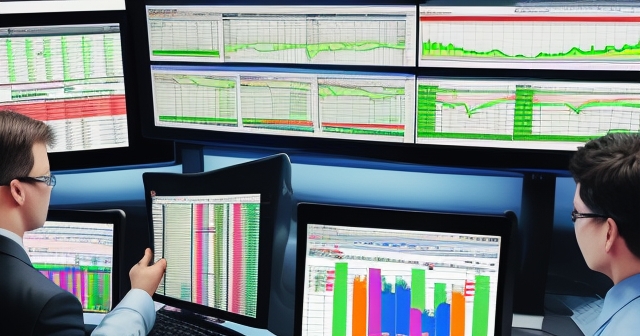
Take Profit Order: Maximize Your Trading Gains with Automated Exits
Table of Contents
ToggleMastering Take-Profit Orders: Securing Your Trading Gains Automatically
Trading the financial markets requires both strategy and discipline. As you navigate the dynamic world of assets, from stocks and forex to commodities and cryptocurrencies, you’ll quickly learn that getting into a profitable position is only half the battle. Knowing *when* and *how* to exit is equally, if not more, critical.
Many traders, especially those starting out, struggle with the emotional tug-of-war between greed and fear. You might hold a winning position, hoping for further gains, only to see the price reverse and erode your profits. Or, you might panic-exit too early, missing out on a significant move. This is where a crucial tool comes into play: the Take-Profit Order.
In this comprehensive guide, we will explore exactly what a take-profit order is, how it works, its strategic advantages and potential drawbacks, and how you can effectively integrate it into your trading plan. Think of this as your blueprint for automating profit capture and bringing more discipline to your trading journey.
Here are some key concepts to understand about take-profit orders:
- They help automate profit-taking, making it easier to lock in gains.
- They remove emotional decision-making from exit strategies.
- They enhance overall trading discipline and strategy adherence.
Below are several crucial aspects relating to take-profit orders, illustrated in the table below:
| Aspect | Description |
|---|---|
| Definition | A T/P order is a limit order to close a profitable position at a predetermined price. |
| Trigger Mechanism | Executed automatically once the market price reaches the set take-profit level. |
| Emotional Management | Prevents emotional decisions from influencing trading outcomes. |
What Exactly is a Take-Profit Order (T/P)?
At its core, a Take-Profit Order, often abbreviated as T/P, is a directive you give to your trading platform or broker to automatically close an open trading position once the market price of an asset reaches a specific, predetermined price level that is favorable to your trade.
Let’s break that down:
- It’s a type of limit order specifically designed for exiting a position.
- It’s set *after* you have already entered a trade (meaning you have an open position).
- For a long position (where you’ve bought expecting the price to rise), the T/P order is placed at a price *higher* than your entry price.
- For a short position (where you’ve sold expecting the price to fall), the T/P order is placed at a price *lower* than your entry price.
- Its sole purpose is to lock in profits automatically when your price target is hit.
Imagine you’ve bought a stock at $50, anticipating it will rise. You might set a take-profit order at $60. If the stock price climbs to $60, your T/P order is triggered, and your position is automatically closed, securing that $10 profit per share.
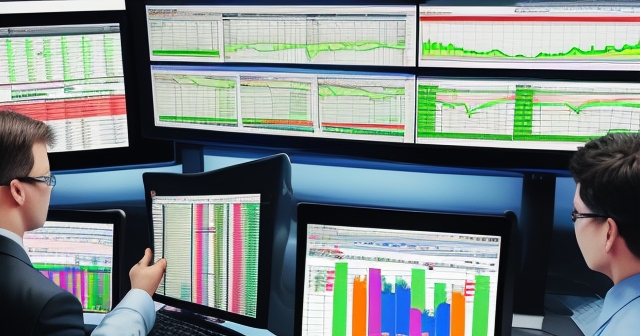
This simple mechanism serves a powerful purpose: removing the need for constant market surveillance and, more importantly, taking the emotion out of your profit-taking decisions. You decide your exit point based on analysis *before* the heat of the market moment.
The Mechanics of Locking In Profit: How T/P Orders Work
Understanding the operational details of take-profit orders is key to using them effectively. How does this seemingly simple instruction actually execute your trade?
When you place a T/P order, you are essentially placing a conditional market order. The condition is the market price reaching your specified target price. The order remains dormant until this condition is met. Once the asset’s price touches or passes your target price:
- The T/P order is instantly triggered.
- Upon triggering, it becomes a market order to sell (for a long position) or buy back (for a short position) at the best available price.
- Your open position is then automatically closed at the resulting fill price.
Consider the example of buying EUR/USD at 1.1000 and setting a take-profit at 1.1050. As the price moves up, nothing happens to your T/P order until the ‘Ask’ price reaches 1.1050. The moment it does, your T/P triggers, and your long position is sold at the best available ‘Bid’ price around 1.1050 (or potentially slightly lower due to the spread). The fill price is the price at which your order is actually executed.
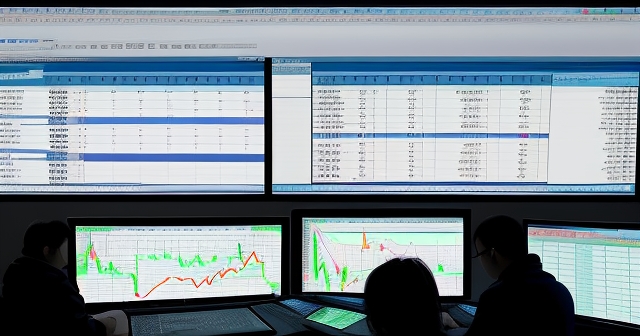
What about potential complications? Markets are not always smooth. Slippage is a significant factor, especially during periods of high volatility or when market participants are few (low liquidity). Slippage occurs when the price moves rapidly between the time your order is triggered and the time it is executed. Your T/P order, acting as a market order upon trigger, aims for the best available price. However, if the price is moving fast, that “best available price” might be slightly different from your exact target price.
For instance, if you have a long position with a T/P at $100, and a sudden surge pushes the price from $99.90 to $100.50 in milliseconds, your T/P might trigger at $100 but fill closer to $100.50 or slightly higher. Conversely, if the price hits $100 and then instantly drops back to $99.80 before execution, your fill price might be closer to $99.80. While positive slippage (filling at a better price than your target) can occur, negative slippage is also a risk, though typically less problematic with T/P orders than with stop-loss orders because you are exiting into favorable price movement.
Some advanced trading platforms or specific order types may offer more nuanced execution, but the core mechanism remains: T/P acts as a tripwire that converts to a market order upon reaching the target price, subject to market conditions at the time of execution.
The Strategic Advantage: Why Use a Take-Profit Order?
Integrating take-profit orders into your trading strategy offers compelling benefits that can significantly enhance your discipline, risk management, and overall trading outcomes.
First and foremost is the automation of profit securing. Once your T/P is set, you no longer need to constantly watch the market, anxiously waiting for your desired price level. The system does the work for you. This is particularly valuable in fast-moving markets or when you cannot be glued to your screen 24/7.
Perhaps even more crucial is the role T/P orders play in combating emotional bias. Greed can be a powerful enemy in trading. Seeing a profitable trade can tempt you to hold on, hoping for just a bit more, only to see the market reverse unexpectedly. By setting a T/P based on your pre-trade analysis, you commit to exiting at a rational target. You override the impulse to get “just a little more” and proactively secure the gains you originally aimed for.
Take-profit orders are an integral part of a robust risk management framework. When combined with a Stop-Loss Order (S/L), which we will discuss further, you define both your potential maximum loss and your potential profit target *before* entering a trade. This allows you to calculate a risk-to-reward ratio, ensuring that the potential profit you’re aiming for justifies the risk you’re taking. For example, risking $100 to potentially make $300 is a 1:3 risk-to-reward ratio – generally considered favorable.
Using T/P orders promotes trading discipline. By pre-setting your exit points, you are adhering to your trading plan. This consistency is a hallmark of successful traders. It helps you avoid impulsive decisions driven by short-term market noise or fear of missing out (FOMO).
Are you currently setting profit targets or just hoping the market keeps going your way? Think about how a T/P order could bring more structure to your exits.
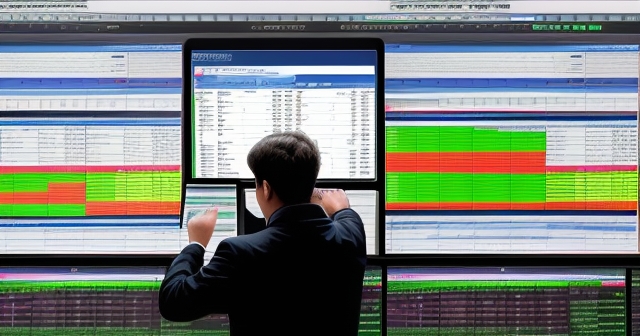
If you’re considering starting Forex trading or exploring a wider range of CFD instruments, Moneta Markets is a platform worth considering. Based in Australia, it offers over 1000 financial instruments, suitable for both beginner and professional traders.
Potential Drawbacks: When T/P Orders Limit Your Gains
While the benefits are significant, it’s equally important to be aware of the limitations and potential downsides of using take-profit orders.
The most commonly cited drawback is the risk of limiting potential gains. Once your T/P order is triggered and your position is closed, you are out of the market. If the asset’s price continues to move strongly in your favor *beyond* your target price, you will miss out on those additional profits. This can be frustrating, especially during strong market trends or major breakouts.
Consider buying a stock at $50 and setting a T/P at $60 based on a short-term target. The stock hits $60, your T/P triggers, and you’re closed out. The next day, unexpected positive news sends the stock soaring to $70. You secured your $10 profit, but you left another $10 on the table per share. This is often referred to as an opportunity cost.
Another consideration, though often less severe for T/P orders than S/L orders, is the potential for slippage or non-execution during extreme market conditions, particularly with market gaps. If the market price jumps over your T/P level (e.g., opening significantly higher than your target after a weekend gap), your T/P will trigger and execute at the first available price, which might be slightly different from your target.
Setting the “correct” or optimal target price is also a continuous challenge. Too close to your entry, and you risk getting stopped out on minor market fluctuations or leaving too much profit on the table if your analysis was sound. Too far away, and your target might never be reached, causing you to miss the opportunity to take profit altogether if the market reverses before hitting your distant goal. This highlights the importance of analytical skills in determining appropriate T/P levels.
So, while T/P orders protect you from your own greed and ensure you capture gains, they inherently cap your upside potential compared to letting a position run without a fixed exit.
Comparing Order Types: T/P vs. Limit Orders and Trailing Stops
To fully appreciate the role of a take-profit order, it helps to understand how it differs from other common order types you’ll encounter on trading platforms.
Let’s start with Limit Orders. This is often a point of confusion because a T/P order is technically a *type* of limit order. However, in common trading parlance, “Limit Order” usually refers to an order used for *entering* a position at a specific, favorable price or better. For example, a Buy Limit order is placed *below* the current market price, hoping to buy if the price dips to that level. A Sell Limit order is placed *above* the current market price, hoping to sell if the price rises to that level. In contrast, a Take-Profit Order is exclusively used for *exiting* an *existing* position once it has moved into profit.
So, the key distinction is purpose: Limit Orders for *entry*, Take-Profit Orders for *profitable exit*.
Now, let’s look at Trailing Stop Orders. This is perhaps the closest relative to a T/P order in terms of profit management, but they function fundamentally differently. A trailing stop is a stop-loss order that dynamically adjusts as the market price moves favorably. For a long position, a trailing stop is set a certain distance (in pips, points, or percentage) below the current market price. As the price rises, the trailing stop rises with it, maintaining that fixed distance. If the price reverses and falls by the specified distance from its highest point, the trailing stop triggers, closing the position. The goal of a trailing stop is to “let profits run” while still protecting against significant reversals.
Contrast this with a Take-Profit Order, which is set at a fixed target price. Once that price is hit, the order triggers, regardless of subsequent price movement. It doesn’t adjust upwards like a trailing stop. The T/P order is designed to secure a specific profit target, while the trailing stop is designed to follow a favorable trend and secure profits while minimizing potential loss from a reversal.
Neither is inherently “better” than the other; they serve different strategic goals. A T/P is for hitting a predefined target, while a trailing stop is for capturing as much of a trend as possible after a certain buffer.
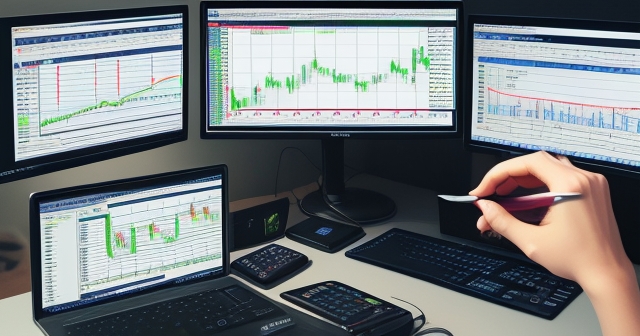
Integrating Take-Profit into Your Trading Strategy: Analysis and Application
Simply placing a T/P order isn’t enough; its effectiveness hinges on *where* you place it and how it fits into your overall trading plan. Effective T/P placement is usually informed by careful market analysis.
One of the most common approaches to setting take-profit levels is using Technical Analysis. Traders look for key levels on price charts that could act as potential turning points or areas where profit-taking is likely to occur. These often include:
- Support and Resistance Levels: Strong historical price levels where buying (support) or selling (resistance) pressure has previously emerged. If you are long, a logical T/P might be placed just below a significant resistance level, as the price might struggle to break through it. If you are short, a T/P might be placed just above a significant support level.
- Chart Patterns: Patterns like double tops/bottoms, triangles, flags, or pennants often have measured move targets associated with them. Your T/P could be set at or near the projected target of a completed pattern.
- Fibonacci Levels: Retracement and extension levels based on the Fibonacci sequence can also serve as potential T/P targets, indicating areas where price rallies or drops might pause or reverse.
- Moving Averages or Other Indicators: Some traders use indicators like moving averages or Bollinger Bands to signal potential exit points.
Beyond technical levels, effective T/P placement is inseparable from your Risk Management strategy, particularly when paired with a Stop-Loss Order. As mentioned, defining both your potential loss (S/L) and potential gain (T/P) allows you to calculate your risk-to-reward ratio. Many traders aim for a minimum ratio, such as 1:2 or 1:3, meaning they target at least twice or three times the profit for every dollar they risk. This ratio is a fundamental aspect of sound money management.

For example, if your analysis suggests potential resistance 150 pips above your entry, and based on volatility and chart structure, a stop-loss 50 pips below your entry is appropriate, you have a 1:3 risk-to-reward ratio (150 profit pips / 50 risk pips). Setting your T/P at 150 pips ensures you adhere to this ratio.
Take-profit orders are also crucial components in Automated Trading Systems or expert advisors (EAs). These systems often use predefined rules based on technical indicators or patterns to enter trades, and they rely heavily on automated S/L and T/P orders for exit management. This ensures that the system’s strategy is executed precisely without manual intervention or emotional influence.
When designing your trading strategy, always consider: Where is the next logical price obstacle based on historical data or technical patterns? Does the potential profit from that target justify the risk I’m taking (as defined by my stop-loss)?
Execution Nuances: Slippage, Gaps, and Platform Specifics
While the concept of a take-profit order is straightforward, its real-world execution can be influenced by market dynamics and the specific trading platform you use. We touched upon slippage earlier, but it’s worth reiterating its impact. When your T/P triggers, it becomes a market order. In highly volatile conditions or during major news events, the price can move significantly between the time your trigger condition is met and the time the order is filled. This is how you might get filled slightly above (positive slippage) or below (negative slippage) your intended take-profit price.
Market gaps, which often occur after weekends or significant news releases, are another scenario. If the market opens with a gap that jumps *over* your take-profit level, your order will execute at the first available price *after* the gap. For a long position with a T/P at 1.2000, if the market closes at 1.1990 on Friday and opens at 1.2050 on Monday, your T/P will trigger and likely fill near 1.2050, giving you a better-than-expected exit price.
It’s essential to understand how your specific trading platform handles order execution, particularly during these volatile periods. Different brokers and platforms may have varying execution speeds and liquidity providers, which can affect the likelihood and magnitude of slippage.
Furthermore, some platforms have specific rules regarding order triggering, especially around major news events. For example, on certain accounts like Instant Funding Accounts, triggering a T/P (or S/L) order within a few minutes before or after a high-impact news release might be classified as a violation (often termed a “soft breach”), potentially leading to adjustments or deductions from your profits for that trade. These rules are put in place to manage the extreme risk and volatility associated with trading directly into news announcements.
If you are trading on platforms with such restrictions, you need to be aware of upcoming news events (easily trackable using an economic calendar) and consider adjusting your T/P/S/L levels or temporarily removing them during the restricted window, or choosing a strategy that avoids trading news altogether.
Platform-specific features can also impact how you manage T/P orders relative to your entry. If you enter a trade with a market order and experience entry slippage, some platforms might offer features to adjust your T/P (and S/L) levels relative to your *actual fill price*, rather than your intended entry price. This ensures that your planned risk-to-reward ratio remains consistent based on where you *actually* entered the market.
Choosing a platform that aligns with your trading style and risk tolerance is vital. If you value high-speed execution and competitive pricing, the technology behind the platform is key. When seeking a trading platform with flexibility and technological advantages, Moneta Markets stands out. It supports popular platforms like MT4, MT5, and Pro Trader, combining high-speed execution with low spread settings to offer a solid trading experience.
Pairing Take-Profit Orders with Stop-Loss Orders: The Core of Risk Management
We’ve mentioned it several times, but the relationship between take-profit orders and stop-loss orders warrants a dedicated focus. These two order types are the dynamic duo of automated exit strategy and are fundamental to sound risk management.
While a T/P order aims to lock in profit, a S/L order is designed to limit your potential loss. It’s set at a specific price level *below* your entry for a long position, or *above* your entry for a short position. If the market moves against your position and hits your stop-loss price, the order triggers and closes your position, preventing further losses.
Think of them as your trade’s protective boundaries. The stop-loss is your safety net, ensuring you don’t lose more than you can afford on any single trade. The take-profit is your goalpost, ensuring you capture gains when your target is reached.
By setting both orders simultaneously when you open a trade, you are defining your maximum potential loss and your maximum potential gain upfront. This allows you to easily calculate your risk-to-reward ratio, a critical metric for assessing the viability of a trade setup. A common guideline is to only take trades where the potential profit is at least twice the potential loss (a 1:2 ratio or better). For example, risking 50 pips for a target of 100 pips.
Placing both orders from the outset helps you avoid common trading pitfalls:
- Avoiding Catastrophic Losses: The stop-loss prevents a single bad trade from wiping out a significant portion of your capital.
- Ensuring Profit Capture: The take-profit ensures you don’t let profitable trades turn into losers by holding on for too long out of greed.
- Maintaining Discipline: Both orders force you to pre-plan your exit strategy based on your analysis, rather than reacting emotionally to price swings.

While some traders might adjust their stop-loss (often trailing it) as a trade becomes profitable, the initial placement of both S/L and T/P based on your analysis provides a crucial structure. For beginners, setting both orders at the start of every trade is a strongly recommended practice for building discipline and managing risk effectively.
Do you always use both a stop-loss and a take-profit order when you enter a trade? How does this discipline affect your overall results?
The Psychology of Profit Taking: Overcoming Greed and Fear
Beyond the technical mechanics, take-profit orders are powerful psychological tools. The act of pre-setting a T/P helps traders navigate the complex emotional landscape of the market.
Greed is perhaps the biggest obstacle to effective profit-taking. When a position is profitable, it feels good. There’s a natural tendency to want more. This can lead to holding a winning trade far beyond its reasonable target, ignoring signs of potential reversal, and ultimately giving back profits or even turning a winner into a loser. By setting a T/P, you make a commitment to yourself to be satisfied with the profit goal you established based on analysis, not based on the excitement of the moment.
Conversely, fear can also impact profit-taking. Fear of giving back profits might cause a trader to exit a position too early, before it reaches its full potential target. While securing *some* profit is better than none, consistently cutting trades short due to fear can significantly limit overall profitability, especially if your initial analysis was solid and indicated a higher probability target.
A take-profit order removes the real-time decision-making pressure. You’ve already decided, when your mind was clear and focused on analysis, what a reasonable profit target is. When the market reaches that point, the order executes automatically, bypassing the internal debate driven by emotion.
Using T/P orders cultivates trading discipline and reinforces the habit of sticking to your plan. It teaches you to trust your analysis and manage expectations. It’s a tangible way to implement the principle of “plan your trade, and trade your plan.” Over time, consistently using T/P orders can help build confidence and reduce the stress associated with managing open profitable positions.
Remember, consistently capturing reasonable profits using a disciplined approach, even if it means occasionally missing out on the last bit of a move, is often a more sustainable path to long-term trading success than trying to squeeze every last cent out of every trade based on hope or greed.
Setting Effective Take-Profit Levels: Practical Tips and Considerations
So, how do you decide *where* to place your take-profit order? This isn’t a one-size-fits-all answer, as it depends heavily on your trading style, time horizon, and the specific asset and market conditions.
Here are some practical tips and considerations for setting effective T/P levels:
- Align with Your Strategy and Timeframe: A day trader will have much tighter T/P targets than a swing trader or a long-term investor. Your T/P should reflect the typical move you expect within your trading timeframe based on your strategy.
- Base it on Analysis, Not Arbitrary Values: Avoid setting T/P levels based on round numbers (like 1.3000 for EUR/USD) unless those numbers also coincide with significant technical levels. Your target should ideally be derived from technical analysis (support/resistance, chart patterns, indicators) or fundamental analysis (e.g., anticipating a price target after earnings news).
- Consider Volatility: In highly volatile markets, price can reach targets quickly but also reverse sharply. Your T/P should account for the typical range and speed of price movement. Using tools like Average True Range (ATR) can help gauge volatility and set realistic targets.
- Factor in the Risk-to-Reward Ratio: This is crucial. Your T/P level should be placed at a distance from your entry that provides a favorable risk-to-reward ratio relative to your stop-loss placement. If your S/L is based on chart structure (e.g., below a recent low), ensure your T/P is at a logical technical level that offers an acceptable multiple of that risk.
- Adjust as Needed (Carefully): While the goal is discipline, markets evolve. If a major news event dramatically changes the fundamental outlook, or if a strong technical breakout occurs unexpectedly, you might *consider* adjusting your T/P level. However, do this with caution and based on a clear, reasoned update to your analysis, not on impulse or greed. Many disciplined traders prefer to stick to their initial target unless there’s an undeniable shift in market structure or fundamentals.
- Use Multiple Targets: For larger positions, some traders scale out by using multiple take-profit orders at different levels. For example, exiting 50% of the position at T/P 1 and the remaining 50% at a higher T/P 2. This allows you to lock in some profit early while still participating in further moves.
Setting T/P levels requires a blend of technical skill and strategic thinking. It’s not just picking a number; it’s identifying a price point that represents a logical conclusion or milestone for your trade based on your analysis.
Automated Trading and Take-Profit Orders
In the realm of automated trading, take-profit orders are absolutely indispensable. Automated trading systems, often running on platforms like MT4 or MT5, execute trades based on predefined algorithms and rules without human intervention. For these systems to be effective and manage risk properly, they *must* have automated exit points.
Expert Advisors (EAs) or trading bots use T/P orders alongside S/L orders to manage every trade from entry to exit. The logic for setting these levels is hardcoded into the program, based on the strategy it implements. For example, an EA might identify a breakout and enter a trade, automatically placing an S/L below the breakout point and a T/P at a level determined by a measured move calculation or a fixed multiple of the stop-loss distance.
The reliability of T/P execution is particularly important for scalping or high-frequency trading strategies that aim to capture small price movements quickly. These strategies depend on precise and rapid order execution to lock in tiny profits repeatedly.
When building or using an automated trading system, the performance of the broker’s execution engine in handling limit orders (including T/P) under various market conditions becomes a critical factor. Slippage, while potentially less impactful on T/P than S/L in percentage terms, can still affect the overall profitability of strategies that rely on hitting exact targets or achieving specific risk-to-reward ratios on every trade.
For traders interested in exploring automated strategies or simply benefiting from robust infrastructure for manual trading, the underlying technology of the platform is paramount. If you are looking for a Forex broker with regulatory assurance and global trading capabilities, Moneta Markets holds multiple international regulatory certifications, including FSCA, ASIC, and FSA. They also offer segregated client funds, free VPS, and 24/7 Chinese customer support, making them a preferred choice for many traders.
Case Study Illustration: Applying Take-Profit in a Hypothetical Scenario
Let’s walk through a hypothetical trade scenario to illustrate how a take-profit order might be applied based on technical analysis.
Imagine you are looking at the chart for United States Steel Corporation (X). The stock has been consolidating for some time, forming what appears to be an ascending triangle pattern, often considered a bullish formation. You identify a key resistance level around $30, which the price has tested multiple times but failed to break through.
Based on the measured move principle for this pattern, you project a potential target price if the stock breaks above $30. Let’s say your analysis suggests a potential move of $8 after a breakout, giving a target of $38 ($30 + $8).
You decide to enter a long position if the stock price clearly breaks above the $30 resistance level, confirming the pattern. You enter at $30.50 after the breakout is confirmed.
For risk management, you identify a logical stop-loss level below the recent swing low within the triangle, perhaps at $28. This means your initial risk is $2.50 per share ($30.50 – $28).
Based on your projected target from the pattern ($38), you decide to place your Take-Profit Order at $38. Your potential profit is $7.50 per share ($38 – $30.50).

Now you calculate your risk-to-reward ratio: $7.50 potential profit / $2.50 potential loss = 3. This gives you a favorable 1:3 risk-to-reward ratio.
You place your long position order, your stop-loss order at $28, and your take-profit order at $38. You can now step away, knowing your exit strategy is in place, whether the market moves in your favor (triggering the T/P) or against you (triggering the S/L).
If the stock price rises and hits $38, your T/P order will trigger, and your position will be automatically closed, securing your profit of $7.50 per share, just as planned. If, instead, the breakout fails and the price falls to $28, your S/L order will trigger, limiting your loss to $2.50 per share.
This example illustrates how technical analysis, risk management principles (risk-to-reward), and the practical use of take-profit and stop-loss orders work together to create a structured, disciplined trading approach.
While this is a simplified example, the underlying principle holds true for various assets and strategies: Analyze, Plan, and Execute using automated orders to manage your risk and secure your profits.
Beyond the Basics: Advanced Considerations for T/P Users
As you gain experience, you might encounter more advanced scenarios or considerations related to take-profit orders:
- Partial Closures: Some platforms allow you to set T/P orders to close only a portion of your position at a certain level, leaving the remainder open to potentially capture further gains with a trailing stop or a second T/P target. This is a strategy used to balance profit-taking with the desire to participate in extended moves.
- OCO (One-Cancels-the-Other) Orders: T/P orders are often placed as part of an OCO order setup. With an OCO, you place two orders simultaneously (typically a T/P and an S/L). If one order is triggered and executed, the other is automatically canceled. This prevents the scenario where your T/P hits, closes your position, but your S/L remains active for a trade that no longer exists.
- Correlation Risk: If you trade multiple related assets, be mindful of placing T/P orders based on the same analysis for all of them. While correlations exist, relying on identical targets across different instruments increases concentration risk. Each trade setup should ideally have T/P levels based on the specific asset’s chart and volatility.
- Commissions and Fees: While not directly part of the T/P order itself, always remember that commissions, spreads, and other trading costs will impact your net profit. Factor these into your target calculations, especially for strategies with tight profit targets.
Mastering take-profit orders involves not just knowing how to place them, but understanding how they interact with other orders, market conditions, and your overall trading objectives. They are a foundational element of professional trading practice.
Conclusion: Embrace Take-Profit Orders for Disciplined Trading
In the journey of becoming a consistently profitable trader, discipline and risk management are paramount. The take-profit order is an indispensable tool that directly supports both of these pillars.
By allowing you to automatically close winning positions at predetermined price levels, T/P orders help you secure gains without succumbing to the emotional pressures of greed and fear. They are a vital component of a comprehensive exit strategy, working hand-in-hand with stop-loss orders to define your potential profit and loss boundaries upfront, thereby establishing a clear risk-to-reward profile for every trade you take.
While using T/P orders means you might occasionally miss out on extended market moves beyond your target, the benefit of consistently locking in profits and adhering to your trading plan often outweighs this opportunity cost, particularly for traders focused on building long-term, sustainable profitability.
Whether you are a beginner just starting to navigate the markets or an experienced trader looking to refine your approach, mastering the strategic placement and utilization of take-profit orders is a crucial step. Integrate them thoughtfully into your trading strategy, base your targets on sound analysis, and let this powerful tool help you trade with greater discipline and confidence.
Remember, successful trading isn’t just about finding good entry points; it’s about managing your trades effectively from start to finish, and take-profit orders are a key part of that management.
take profit order FAQ
Q:What is a take-profit order?
A:A take-profit order is an instruction to close a trading position once a specific profit target is reached, helping to secure gains automatically.
Q:How does a take-profit order differ from a stop-loss order?
A:A take-profit order aims to lock in profits at a predetermined level, while a stop-loss order is designed to limit potential losses by closing a position at a specific lower price.
Q:Can I adjust my take-profit order after placing it?
A:Yes, many trading platforms allow you to modify your take-profit order after it has been set, provided it has not already been triggered by the price movements.
You may also like
Calendar
| 一 | 二 | 三 | 四 | 五 | 六 | 日 |
|---|---|---|---|---|---|---|
| 1 | 2 | 3 | 4 | 5 | 6 | 7 |
| 8 | 9 | 10 | 11 | 12 | 13 | 14 |
| 15 | 16 | 17 | 18 | 19 | 20 | 21 |
| 22 | 23 | 24 | 25 | 26 | 27 | 28 |
| 29 | 30 | 31 | ||||
發佈留言
很抱歉,必須登入網站才能發佈留言。